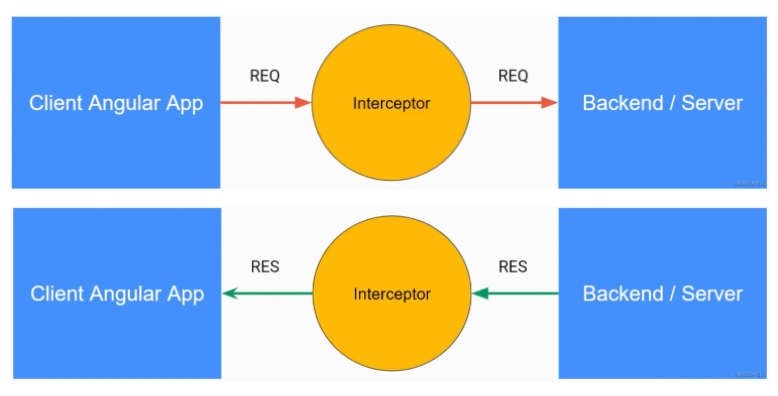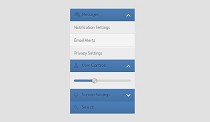浅析Angular中HttpClientModule模块有什么用?怎么用?
4451
本篇文章带大家了解一下Angular中的HttpClientModule模块,介绍一下HttpClientModule模块的使用方法,希望对大家有所帮助!

该模块用于发送 Http 请求,用于发送请求的方法都返回 Observable 对象。
1. 快速开始
引入 HttpClientModule 模块
- // app.module.ts
- import { httpClientModule } from '@angular/common/http';
- imprts: [
- httpClientModule
- ]
注入 HttpClient 服务实例对象,用于发送请求
- // app.component.ts
- import { HttpClient } from '@angular/common/http';
- export class AppComponent {
- constructor(private http: HttpClient) {}
- }
发送请求
- import { HttpClient } from "@angular/common/http"
- export class AppComponent implements OnInit {
- constructor(private http: HttpClient) {}
- ngOnInit() {
- this.getUsers().subscribe(console.log)
- }
- getUsers() {
- return this.http.get("https://jsonplaceholder.typicode.com/users")
- }
- }
2. 请求方法
- this.http.get(url [, options]);
- this.http.post(url, data [, options]);
- this.http.delete(url [, options]);
- this.http.put(url, data [, options]);
- this.http.get<Post[]>('/getAllPosts')
- .subscribe(response => console.log(response))
3. 请求参数
HttpParams 类
- export declare class HttpParams {
- constructor(options?: HttpParamsOptions);
- has(param: string): boolean;
- get(param: string): string | null;
- getAll(param: string): string[] | null;
- keys(): string[];
- append(param: string, value: string): HttpParams;
- set(param: string, value: string): HttpParams;
- delete(param: string, value?: string): HttpParams;
- toString(): string;
- }
HttpParamsOptions 接口
- declare interface HttpParamsOptions {
- fromString?: string;
- fromObject?: {
- [param: string]: string | ReadonlyArray<string>;
- };
- encoder?: HttpParameterCodec;
- }
使用示例
- import { HttpParams } from '@angular/common/http';
- let params = new HttpParams({ fromObject: {name: "zhangsan", age: "20"}})
- params = params.append("sex", "male")
- let params = new HttpParams({ fromString: "name=zhangsan&age=20"})
4. 请求头
请求头字段的创建需要使用 HttpHeaders 类,在类实例对象下面有各种操作请求头的方法。
- export declare class HttpHeaders {
- constructor(headers?: string | {
- [name: string]: string | string[];
- });
- has(name: string): boolean;
- get(name: string): string | null;
- keys(): string[];
- getAll(name: string): string[] | null;
- append(name: string, value: string | string[]): HttpHeaders;
- set(name: string, value: string | string[]): HttpHeaders;
- delete(name: string, value?: string | string[]): HttpHeaders;
- }
- let headers = new HttpHeaders({ test: "Hello" })
5. 响应内容
- declare type HttpObserve = 'body' | 'response';
- // response 读取完整响应体
- // body 读取服务器端返回的数据
- this.http.get(
- "https://jsonplaceholder.typicode.com/users",
- { observe: "body" }
- ).subscribe(console.log)
6. 拦截器
拦截器是 Angular 应用中全局捕获和修改 HTTP 请求和响应的方式。(Token、Error)
拦截器将只拦截使用 HttpClientModule 模块发出的请求。
- $ ng g interceptor <name>

6.1 请求拦截
- @Injectable()
- export class AuthInterceptor implements HttpInterceptor {
- constructor() {}
- // 拦截方法
- intercept(
- // unknown 指定请求体 (body) 的类型
- request: HttpRequest<unknown>,
- next: HttpHandler
- // unknown 指定响应内容 (body) 的类型
- ): Observable<HttpEvent<unknown>> {
- // 克隆并修改请求头
- const req = request.clone({
- setHeaders: {
- Authorization: "Bearer xxxxxxx"
- }
- })
- // 通过回调函数将修改后的请求头回传给应用
- return next.handle(req)
- }
- }
6.2 响应拦截
- @Injectable()
- export class AuthInterceptor implements HttpInterceptor {
- constructor() {}
- // 拦截方法
- intercept(
- request: HttpRequest<unknown>,
- next: HttpHandler
- ): Observable<any> {
- return next.handle(request).pipe(
- retry(2),
- catchError((error: HttpErrorResponse) => throwError(error))
- )
- }
- }
6.3 拦截器注入
- import { AuthInterceptor } from "./auth.interceptor"
- import { HTTP_INTERCEPTORS } from "@angular/common/http"
- @NgModule({
- providers: [
- {
- provide: HTTP_INTERCEPTORS,
- useClass: AuthInterceptor,
- multi: true
- }
- ]
- })
7. Angular Proxy
在项目的根目录下创建 proxy.conf.json 文件并加入如下代码
- {
- "/api/*": {
- "target": "http://localhost:3070",
- "secure": false,
- "changeOrigin": true
- }
- }
/api/:在应用中发出的以
/api开头的请求走此代理target:服务器端
URLsecure:如果服务器端
URL的协议是https,此项需要为truechangeOrigin:如果服务器端不是
localhost, 此项需要为true
指定 proxy 配置文件 (方式一)
- // package.json
- "scripts": {
- "start": "ng serve --proxy-config proxy.conf.json",
- }
指定 proxy 配置文件 (方式二)
- // angular.json 文件中
- "serve": {
- "options": {
- "proxyConfig": "proxy.conf.json"
- },
本文网址:https://www.zztuku.com/detail-9437.html
站长图库 - 浅析Angular中HttpClientModule模块有什么用?怎么用?
申明:如有侵犯,请 联系我们 删除。
















您还没有登录,请 登录 后发表评论!
提示:请勿发布广告垃圾评论,否则封号处理!!